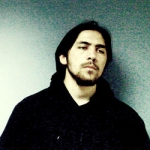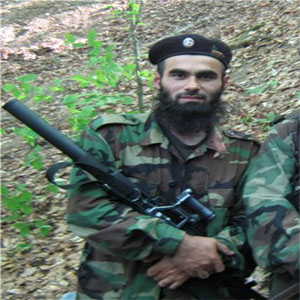The Origins of Waynakh Dance

Have you ever wondered why Waynakhs dance one way but not another way?
The girl glides like a white swan, gracefully bending her figure and smoothly moving her hand. The boy pursues her around the circle, either following her or blocking her way in a swift spurt. The rhythm becomes more and more expressive, their eyes are burning and the air is torn by screams: “H1ors! H1ors to1!” The boy twines around the girl like a whirligig: “Ors-toh! Toh! H1ors!”. Indeed, this dance should mean something, shouldn’t it?
You know, initially all dances of the world had meaning. They were components of sacred ceremonial rites and reflections of the spiritual culture of a people. The echoes of a ritual act are clearly seen in Waynakh dances.
Finally, what does this mysterious exclamation mean: “H1ors (ors), h1ors to1 (ors-toh)”?
The legend of “The maintenance of judges of Tkhaba-Yerd temple” tells us about the fact that Waynakh dance carries the echo of some ancient mystery. Here is a fragment from this legend:
“There were two circles drawn near the Tkhaba-Yerd temple: the smaller one in the center and the bigger one from the outer side. The newlyweds were brought to dance in this strip between two circles in the presence of judges. If a dancer even slightly touched the line of one of the circles, inner or outer, then the judges exclaimed: ‘E-e, narto!’ This exclamation meant, that the dancer violated the line. The bridegroom was brought to give maintenance for three days to the judges again after a year and to dance again with his wife along this circle. This could be repeated every year, until the pair danced flawlessly…”
But what ritual sense did our ancestors put into the dance?
One can mark out the most important elements of the dance, which are connected with the sacred rites:
1. Circle (the dance is performed along the circle);
2. The presence of one pair;
3. The movement of a man behind a woman (“pursuit”), or attempt by a man to block the woman’s way;
4. The position of man’s arms: he moves his arms apart (something like cross) or bends one arm keeping his hand near his breast, and he moves the other arm apart, leading it behind a woman (something like swastika);
5. It also remained as an archaism, that a man embraces the woman’s waist by closing his fingers behind her back, but not touching her body. In later times this gesture was interpreted as a sign of daring;
6. The movement was performed in a slow tempo. According to the words of old people, earlier dances were slower. It was regarded as shame if metal pendants which decorated Caucasian belts would collide and clank during the dance. In addition, earlier dance competitions were organized by hooking a certain amount of the alchiks to the belt (alchik is beef bone used in games). The dancers were gradually hastening the tempo; the one whose alchiks collided, lost. Presently, Chechen and Ingush dances are performed in the most furious manner among all Caucasian dances, and the strict rites of the dance are not observed;
7. If a man blocks woman’s way and she cannot move, she should whirl in place;
8. A man, getting up on his tiptoes, throws up his arms maximally above his head (by the way, at the beginning of 19th century, under the charm of Caucasian dance, Paris ballet “got up on their tiptoes”);
9. It was a shame if a man touches a woman during the dance, even if they are relatives, unlike Kabardians and Adige’s in which men and women perform some dances arm in arm. (And here not only Waynakh customs are seen, where a strange man touching a woman is considered at the same level as adultery. You know, some other North Caucasian peoples had the same notions in the past);
10. The man’s exclamation (women pronounce no sounds during the dance) “hIors (ors), hIors-toI (ors-toh)”. In the same manner, by the way, the neighboring peoples exclaim during the dance (Ossetian and Dargin “arstoh”, etc.)
What ancient sacred notions of the ancestors of the Chechens could be reflected in dance?
Obviously, one should search for the answer in the solar cult existing in Waynakhs in the past. There are reasons to consider that a man and a woman imitated the movement of the Sun and the Moon. It is said in the ancient Waynakh legend (“As Sun, Moon and stars appeared”) that one skillful blacksmith sent matchmakers to the radiant girl, not suspecting that she was his sister. After her refusal, he took the golden blazing torch and came to the girl himself. “The girl saw him and took to her heels. He followed her. He ran behind her for a very long time until they both died. The sparks from the golden torch turned into stars. The radiant shining remained from the girl, the firebrand – from the young blacksmith. They turned into the Sun and Moon. And until now, the Sun cannot catch up with the Moon”.
There is also the riddle in Waynakhs: “Do you know, what it is: the sister does not meet her brother, the brother cannot catch up with his sister?” The answer is the Sun and Moon.
In Waynakh, like many other peoples, the Sun was a powerful male deity in heathen notions.
Cosmological notions of the ancestors of Chechens and Ingush are also reflected in symbolic images (pictograms) on the belt buckles of 6th – 5th centuries B.C. (for example, from the burial place of Meadow sepulcher near Muzhichi village), or at the similar pictogram at the castle stone of one of the ancient towers in the Egikal fortress.
According to R.M.Uzhakhov’s opinion, the probable decoding of such and similar pictograms is the following: the broken line is the sea (according to the traditional Waynakh notions the Sun came out from the sea in the morning and came to it in the evening, plunged into “West waters”), and “winged discs” at the sides – the Sun during sunrise and sunset. The central disc in these images has “wings”, maximally lifted up – this sign symbolizes the Sun in the zenith. (Such patterns remain at pendants, ancient carpets – “istangs”, weapon decorations, etc.).
All this things explain many elements of Waynakh dance, don’t they?
The “pursuit” of a man behind a woman along the circle is the movement of the Sun (a man) and Moon (a woman). The same explain the fact that in Waynakh choreography one pair but not a group of people were dancing.
The position of the man’s arms apart, in the form of the cross meant the Sun in sunrise and sunset. Because the cross itself (which became a Christian symbol later), comes from heathen beliefs and initially was a symbol of the Sun, it is very possible (and it is declared yet in scientific researches) that the notions about Jesus Christ (peace to him), “crucified on the cross” comes from more ancient associative signs: the Sun – cross – man; the symbols of a man inside the circle or a cross inside the circle have analogous meaning.
The position of the man’s arms, when he bends his arm, keeping his hand near his breast, corresponds to the image of the swastika, which symbolizes the Sun in its celestial movement. The swastika is one of the most widely-spread signs on ancient Waynakh architectural installations and decorative items.
Getting up on his tiptoes and throwing up his arms above his head, a man imitates the Sun in its zenith. And finally, “bravado” with embracing of woman’s waist, without touching her body, also can be easily explained: it is a symbolic imitation of a lunar eclipse (in Chechen “retention of the Moon”, “butt latsar”). The other elements of Waynakh dance also can be explained in the same “solar” way.
Obviously, the strict ceremonial rites of the dance, the character of solar mystery which it carries, began to be violated and forgotten with adoption of Islam in our land. The ritual was losing its cult content more and more and was turning into a dance. The tempo began to hasten, some elements were lost, and others were assumed. Now it will be easier to unravel the meaning of the exclamation “h1ors-to1 (ors-toh), h1ors (ors)”.
It is known that ancient Sarmats worshipped the solar deity by the name of Khors. This deity was revered also in medieval Rus. In many languages of the Iranian group, different vowels of this word meant the Sun. One can suppose that to the ancestors of Waynakhs, who were in close contact with Iranian-speaking world, this “dance” exclamation also meant the Sun as an object of sacred reverence?
…When the sounds of the inflammatory dance calmed down, we think not about mystery of celestial bodies, but about nobleness and valor, because Chechen dances with their furious rhythm and at the same time with strictness of the movement truly is the beautiful anthem of freedom!
Dalkhan Khozhaev
Chechen historian (Dala g1azot k1obal doyl tsunan! – Let Allah accept his gazavat!)
*The article was published by the “Chechenets” newspaper, №2(017), February 1998
**Text was translated by Aminat for Waynakh Online and edited by Michael Capobianco

















What do the Chechen call their dance circle? I know the adiga call it a joug and was wondering if it is the same?
Thank you!